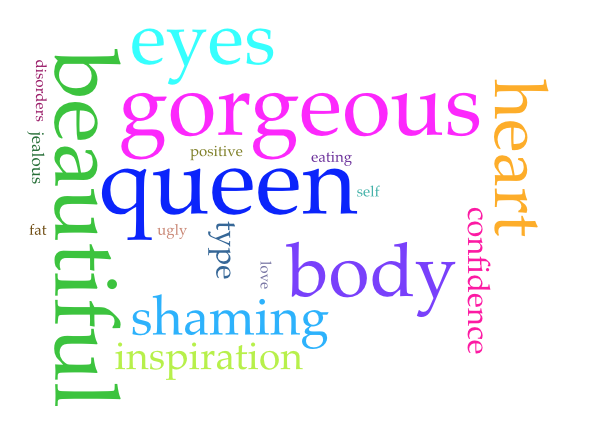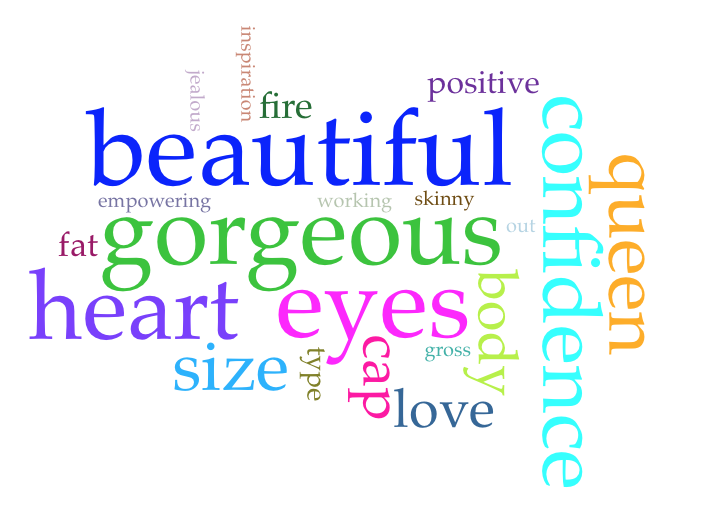Throughout my quantitative and qualitative research I have been able to see the ways in which influencers on Tik Tok have portrayed body positivity through their content and how the public perceives their ideals. One theme that emerged throughout my findings was the difference between empowerment, encouragement and envy. I chose ten influencers, five who were heavier and five who have a thinner/average body type, to see if the public views them differently even if all of them promote some form of body positivity. Through my research I was able to find recurring words throughout each of the influencers content allowing me to analyze these posts to develop common themes/patterns. The first theme that I decided to explore and further analyze is this idea of empowerment, encouragement and envy as each of these ideals are associated with one body type. The public visually seeing a heavier set influencer vs a thinner influencer completely alters the way in which they think about themselves and the message they display.

When looking at influencers with a heavier body type that embody the ideals of body positivity, the public often viewed them as empowering and brave. Being heavier and showing off your body to the entirety of the internet takes a lot of courage and many people in the comments view these influencers as empowering and influential. Remi Bader, a plus-sized model who posts realistic try-on hauls, receives praise and for showing her authentic self. One female-identified individual under Remi’s post commented, “I loooooove your confidence!!!” This is one of many comments that share the same message of supporting her confidence and being authentically herself despite not having a body that molds to society’s standards. Another influencer, Tess Holliday, also shares a similar heavier body type to Remi and receives similar support by the public. In her video a sound is played that contains the phrase, “I love seeing women feel empowered and especially women who are thick”. As this audio is being played there are several short clips that show her confidently showing off her body. One comment under her post by another female user states, “You give me so much confidence, I needed this!” Plus-sized influencers elicit a message centered around empowerment for others to feel confident in their own skin and most of the public shows encouragement and support for their content. On the other hand, Abbie Herbert, a thinner model who also shows off her body, receives different commentary under her post for essentially sharing the same content as Remi and Tess. This specific video shows her first time modeling since she had a baby. One of the comments reads, “Dang the fact we had our babies around the same time and she has no stretch marks. I’m jealous.” The public tends to compare their bodies to thinner models as they embody the ideal body type within society. Thinner body types often do not receive the same encouragement and support by the public as even if the creator’s message is to promote body positivity, the public does not view it this way.

Analyzing different influencers and how their body type affects the way in which people view and support them was quite interesting as it is apparent that the public takes into consideration the influencers body type when viewing their endorsement of body positivity. While these three influencers all try to portray the same message to empower people to be happy and appreciate their own body, people viewed the influencers with a heavier body type to be confident and inspiring whereas thinner models receive comments of envy and jealousy because they want their bodies to look like theirs. The body positivity movement is all about making every body type feel loved and accepted but it is quite hypocritical that the public mainly feels that heavier set influencers are the only ones to really relay this message. Thinner models promote body positivity just as every other influencer does that I looked into, but the public’s reaction differs as less people can relate to their body type and therefore do not feel confident in their own body.
The quantitative data for all ten influencers looks similar when compared through Voyant as each influencer received both positive and negative comments. How encouragement, empowerment and envy differ through each lies within the qualitative data and how the public wants the influencers to perceive their comments. Some comments are sarcastic or are back-handed compliments but just by looking at the quantitative data, you would not be able to see the underlying meanings behind some of the comments.